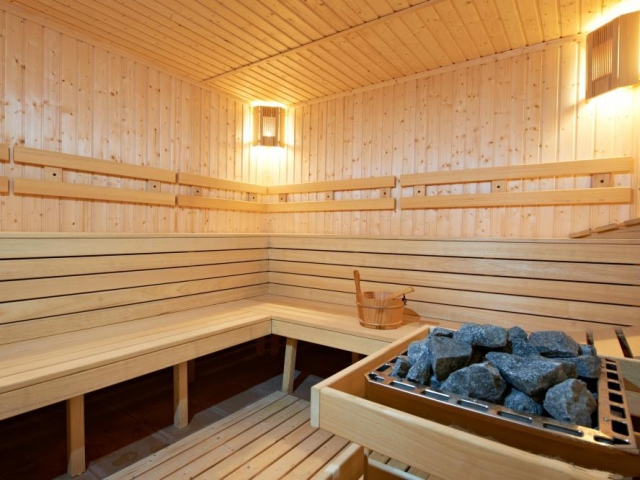Types of stones for the bath and features of their choice. Instructions for laying stones in the furnace
Content
Stones for a bath are not only objects that will help decorate the interior, but also provide an excellent vacation in the steam room. In this article we will consider what types of stones exist for a bath and sauna, how to choose the right option.
Bath requirements Requirements
Now the market has a huge number of stones for the bath, both for wealthy people and buyers with a small income. If you want to build a mobile bath, and quickly take a steam bath, I will come even cobblestones from the road. But if you are building a constant, stationary bathhouse in your yard, you should treat the choice of stones with responsibility. The fact is that stones for a stove or an electric furnace are created in order to accumulate heat as much as possible and give it together with the steam.
Requirements for the stones for the bath:
- In no case should you collect stones or cobblestones near the house. After all, it is so difficult to control their radiation background. During heating and dousing with water, substances harmful to health can be released.
- Many owners of the baths who only built it believe that you can fill the furnaces even with an ordinary pebble or gravel. In fact, this is not so. Stones should be chosen not only by their characteristics, but also in size, appearance.
- It is best if the stones are flattened. This will facilitate their laying in the stove. The size should vary in the range of 70-130 mm. Larger stones are suitable for stone furnaces, and small for electric ones. Because their size is small enough, and in order to lay them tightly, smaller stones will be required.

Bath stones: types and names
Types of stones for the bath:
- Jade. This is a semi -collet stone that is not cheap and, accordingly, not everyone can afford such purchases. It has high heat capacity, holds heat for a very long time. Therefore, during your stay in the bath, you will not have to throw firewood into the oven all the time. Because the stones accumulate heat well and give it very slowly.
- Nephritis. The price of this stone is also not very low. Therefore, it is not widely represented in stores. It is quite difficult to purchase because of rarity. Strength can be compared with steel. It does not split if it is broken with a hammer, and also practically does not crack after heating and dousing with cold water. It practically has no cracks, heats heat well. In addition, it perfectly affects the state of the cardiovascular and nervous system. The couples that this stone allocate are useful for the respiratory tract and will be able to positively affect human health.
- Gabbro Diabaz. This stone is not precious, used as a building material. But it became popular due to its low cost. It is worth noting that the material in a cold state is quite durable, but when heated, it has the ability to crack. Be prepared for the fact that in two years you will have to completely replace the stones. Another advantage of this type of filler for the furnace in the bathhouse is that the stone has a flattened shape. It is easy to put one on one in the oven.
- Jasper is a wax. Basically, this stone used wealthy people to fill the bathhouse. The mineral is semiprecious, does not crack when heated and rapidly cooling with cold water. The service life is up to 10 years. Positively affects the state of the female organs, as well as the circulatory system.
- Talkhlite. Now this stone is used to fill baths most often because of its low price and excellent temperature coefficient. He accumulates heat and holds it for a day. It practically does not crack, affects the state of internal organs well, reduces increased blood pressure, improves the condition of the respiratory system. It will be a great option for filling the furnaces of people who do not have so many means and they cannot afford semi -delegal stones.
- Chromite. It is also called a bath or black stone. It has long been used in Russia as a filler for a bath, as well as saunas. It affects the condition of the respiratory system, helps to get rid of colds. A low price helps to use as filler for stoves, as well as electric furnaces.

The best stones for the furnace in the bathhouse
The choice of a particular type of stone depends on your financial capabilities, as well as preferences.
The best stones:
- If you plan to rebuild the bathhouse or only want to try, but are not yet sure of your choice, stop on an inexpensive option. Suitable chromite or talcohlorite. These are inexpensive, quite tolerable options that can be used as a constant filling for the bath.
- If you are building a permanent bath, and also want to make money on this by renting a room, then it is best to choose more expensive furnaces fillers. An ideal option will be jade, which is semiprecious, holds heat well, and also releases useful pairs when heated and watering with cold water. It will last about 10 years. It practically does not crack, so you do not need to change it.
- Very often, experienced owners of the bath combine stones, choosing both cheap and expensive options. The fact is that the stone is cheaper can be located below. For example, talcohlite, and put on top it is more expensive, for example, jadeite.

Preparation and laying of stones for a bathhouse
Before you melt the stove and take a steam, it is necessary to prepare the stones correctly. To do this, they are washed under running water.
Instructions for the preparation and laying of stones:
- Despite the fact that the stones may seem clean to you, they may have a decent layer of dust. Therefore, they are thoroughly washed, dried, and examined for the presence of cracks, as well as the vein. If there are red veins in the stones, they must be thrown away. Because they indicate the presence of iron, which will be released along with the steam while watering with water.
- Next, you need to properly put the stones in the furnace. They are not laid out at all as you think. I put larger stones on the bottom, with a fraction of 140-70 mm. Small stones are laid above. At the same time, it is necessary to lay them not flat, but vertically. That is, the stones in height, and not in width, fit closer to the walls.
- After laying out large stones, small ones are laid on top. This laying order helps to better penetrate the couple from the bottom of the furnace to the top. In this way, the heat is held for a long time, which the stones will gradually give.
- After the stove is filled with stones, it is necessary to heat them very much for the first time, and then pour cold water. For the first time, stones are recalled almost reddened. After that, the furnace is cooled, and stones are watched for the presence of cracks. If such particles appear, pebbles are rejected and thrown away.

Stones for baths have not only a decorative function, but are also able to retain heat for a long time, while saving firewood and other fuel materials. Therefore, it is necessary to correctly choose the type of stones, as well as their dimensions.






